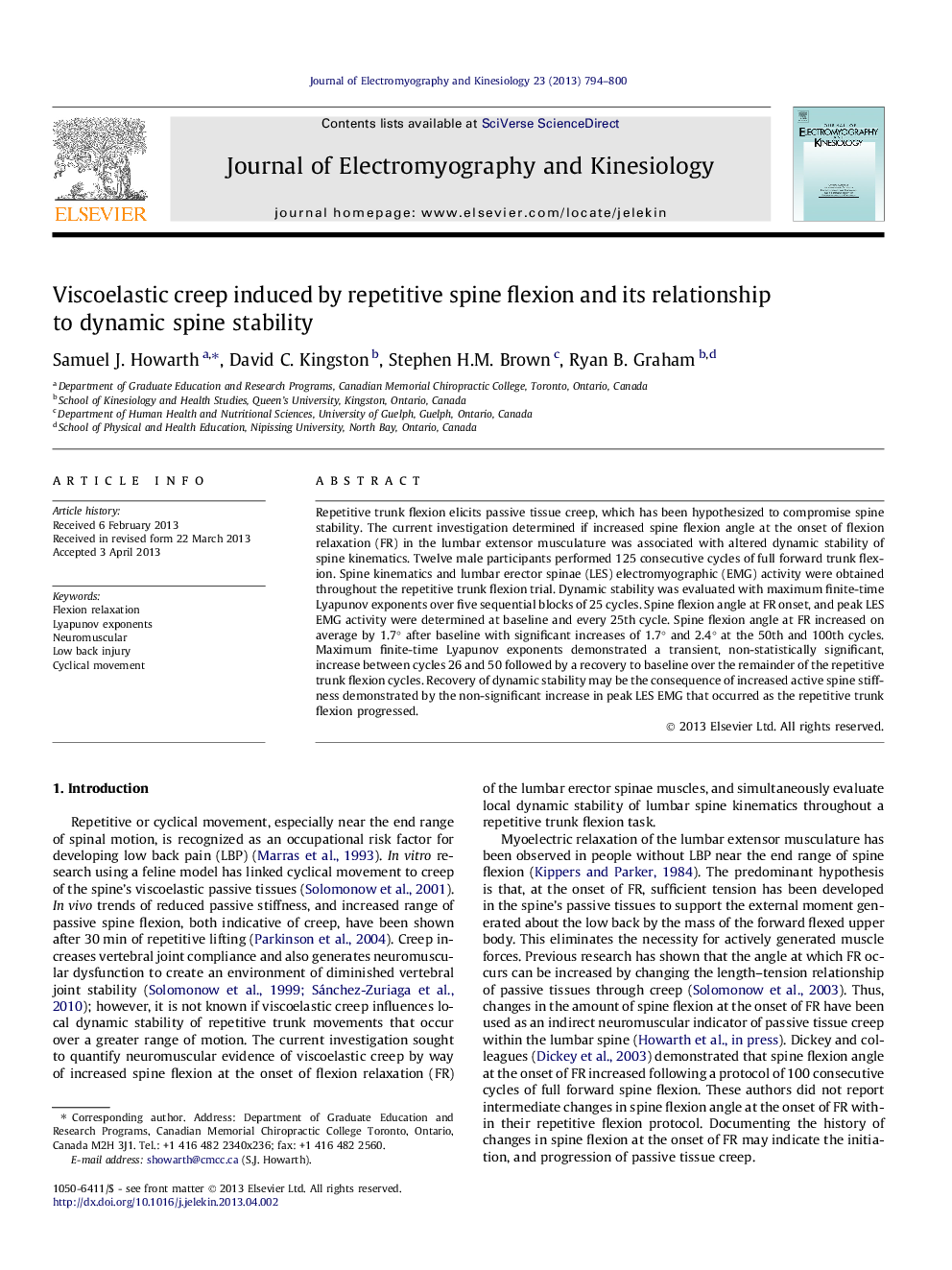| کد مقاله | کد نشریه | سال انتشار | مقاله انگلیسی | نسخه تمام متن |
|---|---|---|---|---|
| 4064518 | 1266213 | 2013 | 7 صفحه PDF | دانلود رایگان |

Repetitive trunk flexion elicits passive tissue creep, which has been hypothesized to compromise spine stability. The current investigation determined if increased spine flexion angle at the onset of flexion relaxation (FR) in the lumbar extensor musculature was associated with altered dynamic stability of spine kinematics. Twelve male participants performed 125 consecutive cycles of full forward trunk flexion. Spine kinematics and lumbar erector spinae (LES) electromyographic (EMG) activity were obtained throughout the repetitive trunk flexion trial. Dynamic stability was evaluated with maximum finite-time Lyapunov exponents over five sequential blocks of 25 cycles. Spine flexion angle at FR onset, and peak LES EMG activity were determined at baseline and every 25th cycle. Spine flexion angle at FR increased on average by 1.7° after baseline with significant increases of 1.7° and 2.4° at the 50th and 100th cycles. Maximum finite-time Lyapunov exponents demonstrated a transient, non-statistically significant, increase between cycles 26 and 50 followed by a recovery to baseline over the remainder of the repetitive trunk flexion cycles. Recovery of dynamic stability may be the consequence of increased active spine stiffness demonstrated by the non-significant increase in peak LES EMG that occurred as the repetitive trunk flexion progressed.
Journal: Journal of Electromyography and Kinesiology - Volume 23, Issue 4, August 2013, Pages 794–800